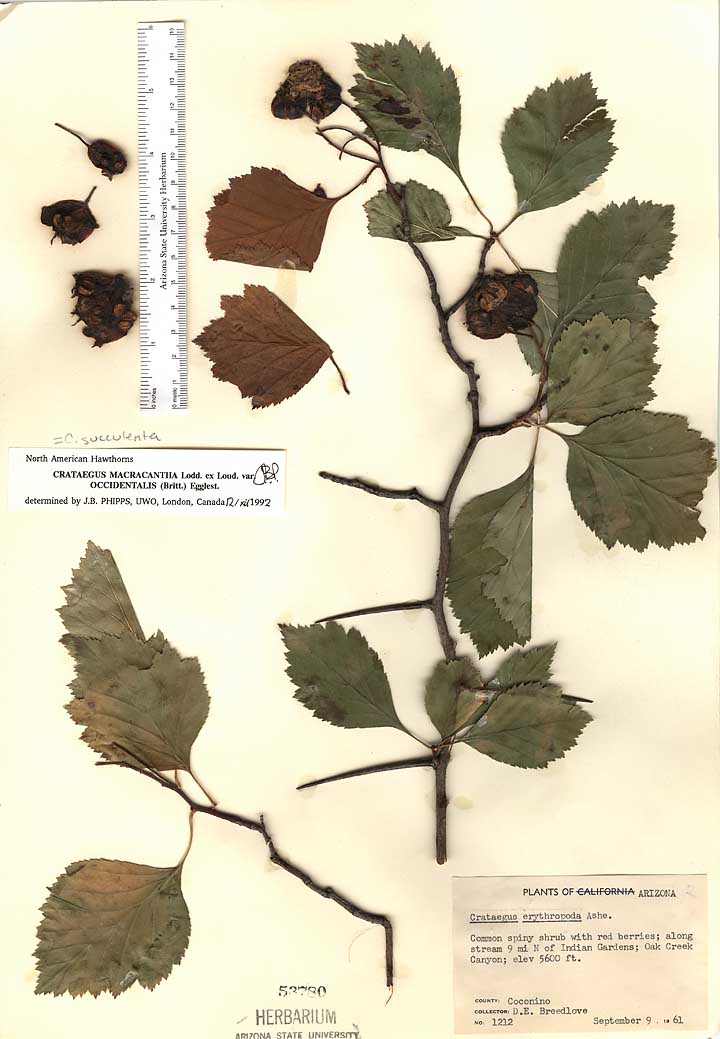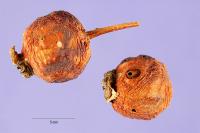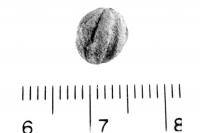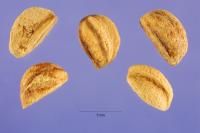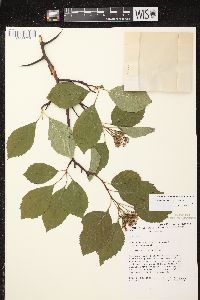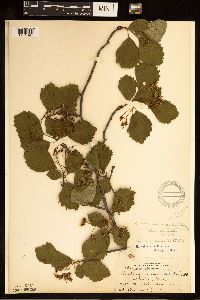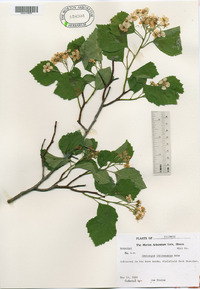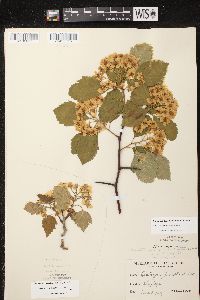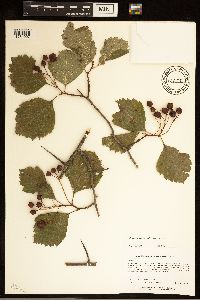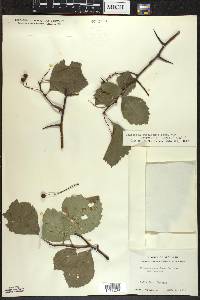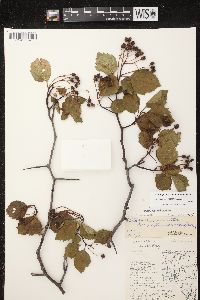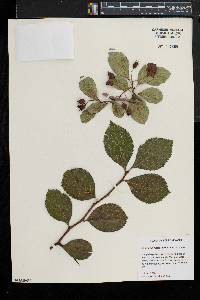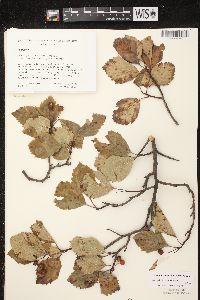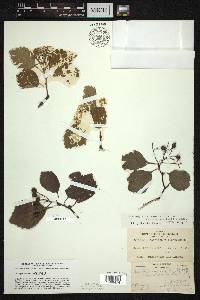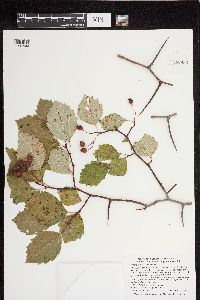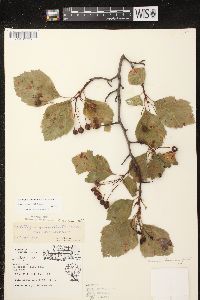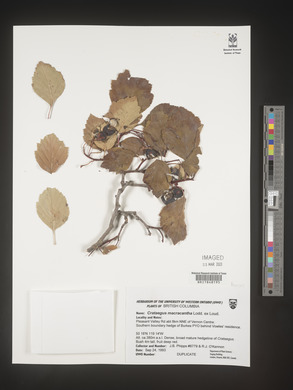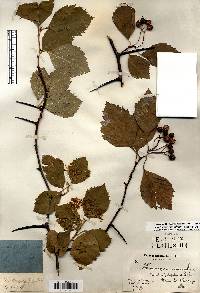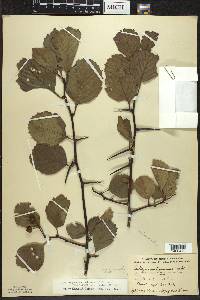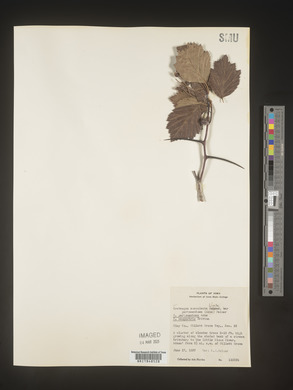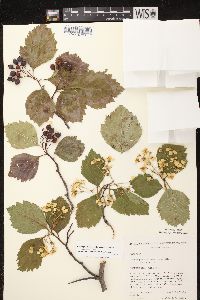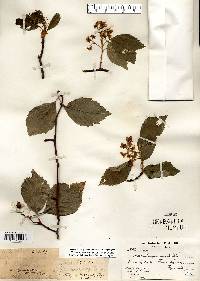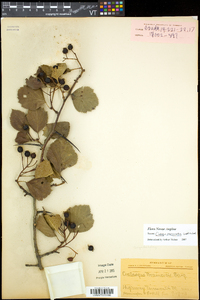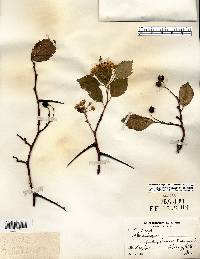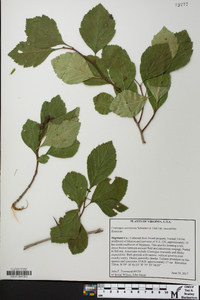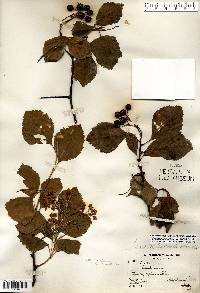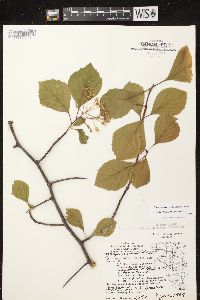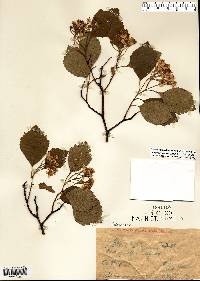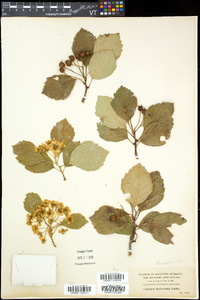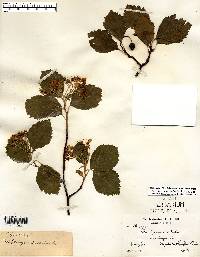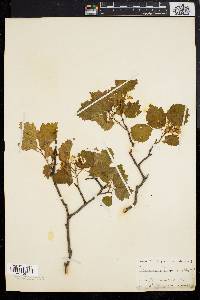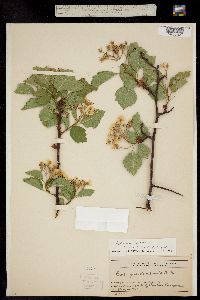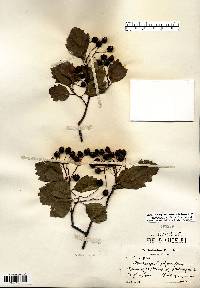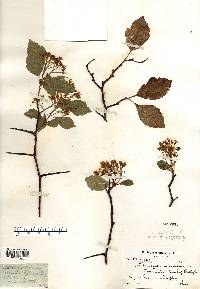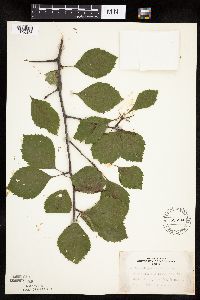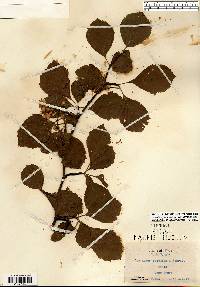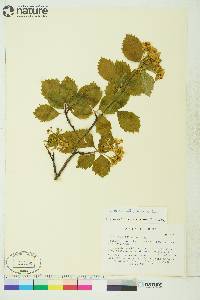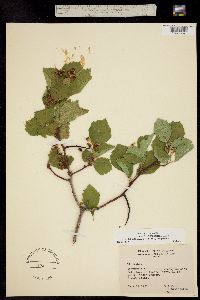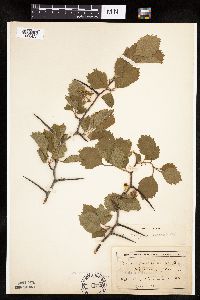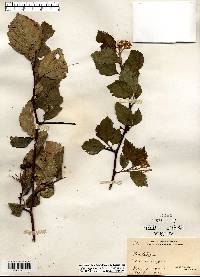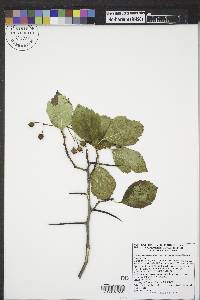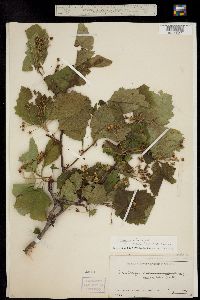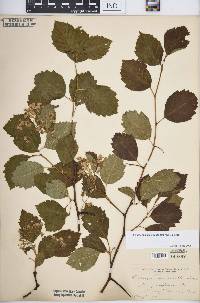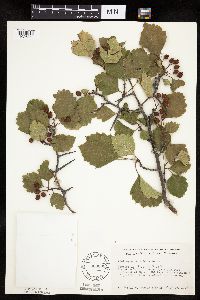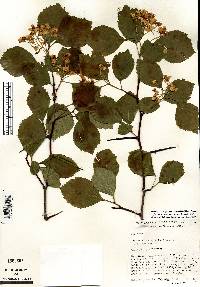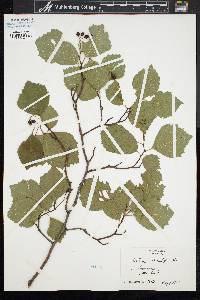
|
|
|
|
Family: Rosaceae
Bicknell's Hawthorn, more...Fleshy Hawthorn, Phipps' Hawthorn, succulent hawthorn
[Crataegus ambrosia Sarg., moreCrataegus ardua Sarg., Crataegus ardula , Crataegus bicknellii Eggleston, Crataegus celsa Sargent, Crataegus chrysocarpa var. bicknellii (Eggl.) E.J.Palmer, Crataegus colorado Ashe, Crataegus columbiana var. occidentalis (Britton) R.D.Dorn, Crataegus divida Sargent, Crataegus ferta Sarg., Crataegus florifera Sarg., Crataegus florifera var. celsa (Sarg.) Kruschke, Crataegus florifera var. mortonis (Laughlin) Kruschke, Crataegus florifera var. shirleyensis (Sarg.) Kruschke, Crataegus florifera var. virilis (Sarg.) Kruschke, Crataegus gemmosa Sargent, Crataegus halliana Sarg., Crataegus incerta Sarg., Crataegus integriloba Sargent, Crataegus laxiflora Sargent, Crataegus leucantha Laughlin, Crataegus longispina Sarg., Crataegus macracantha Lodd. ex Loud., Crataegus macracantha var. colorado (Ashe) Kruschke, Crataegus macracantha var. divida (Sarg.) Kruschke, Crataegus macracantha var. integriloba (Sarg.) Kruschke, Crataegus macracantha var. macracantha , Crataegus macracantha var. occidentalis Eggl., Crataegus macracantha var. pertomentosa (Ashe) Kruschke, Crataegus michiganensis Ashe, Crataegus mortonis Laughlin, Crataegus neofluvialis Ashe, Crataegus pertomentosa Ashe, Crataegus pisifera Sargent, Crataegus rhombifolia Sarg., Crataegus saeva Sarg., Crataegus shirleyensis Sargent, Crataegus silvestris Sarg., Crataegus succulenta var. gemmosa (Sarg.) Kruschke, Crataegus succulenta var. laxiflora (Sarg.) Kruschke, Crataegus succulenta var. macracantha (Lodd. ex Loudon) Eggl., Crataegus succulenta var. michiganensis (Ashe) E.J.Palmer, Crataegus succulenta var. neofluvialis (Ashe) E.J.Palmer in Dole, Crataegus succulenta var. occidentalis (Britton) E.J.Palmer in Fernald, Crataegus succulenta var. pertomentosa (Ashe) E.J.Palmer, Crataegus succulenta var. pisifera (Sarg.) Kruschke, Crataegus succulenta var. rutila (Sarg.) Kruschke, Crataegus sylvestris Auct., Crataegus venulosa Sarg., Crataegus virilis Sargent] |
Tree to 8 m, or sometimes an arborescent shrub, the twigs glabrous or slightly hairy when young, armed with stout thorns 3-4.5 cm; lvs firm, the upper side often strigose when young, dark green, glossy, and glabrous at maturity, the lower side glabrous to ±persistently hairy, the blade elliptic or rhombic to ovate or oblong-obovate, shallowly lobed especially above the middle, mostly 3-6 נ2-5 cm; petiole 1-2 cm, usually eglandular; fls 1-1.7 cm wide, in glabrous to villous compound cymes; sep glandular-serrate, becoming reflexed and often eventually deciduous; fr bright red, 0.7-1.2 cm thick; nutlets mostly 2-3(4), rounded at the ends, with a large, deep pit on the inner face. Usually in dry or rocky ground; N. Engl. and se. Can. to Pa. and in the mts. to N.C. and Tenn., w. to Man., Mo., Neb., and w. U.S. (C. laxiflora) Gleason, Henry A. & Cronquist, Arthur J. 1991. Manual of vascular plants of northeastern United States and adjacent Canada. lxxv + 910 pp. ©The New York Botanical Garden. All rights reserved. Used by permission. From Flora of Indiana (1940) by Charles C. Deam Leaves oblong-ovate, elliptic or rhombic, mostly 5-8 cm long, and 2.5-6 cm wide, acute or short acuminate at the apex, gradually or abruptly narrowed at the base and attenuate into short (1-2 cm), winged petioles, finely serrate except toward the base, usually with 2-5 pairs of shallow or obscure lateral lobes, coriaceous or subcoriaceous and with veins conspicuously impressed above at maturity, dark green and scabrate above when young, much paler and permanently pubescent beneath; flowers 12-15 mm in diameter, usually 15-30, in compound, villous, corymbs; stamens usually about 20 ; anthers pink or red; fruit subglobose, 9-12 mm in diameter, bright red and succulent at maturity; calyx slightly elevated; calyx lobes glandular-serrate, reflexed in fruit; nutlets 2-3, deeply pitted on the ventral surfaces. A stout shrub or rarely a small tree up to 6-8 m high, with dark gray, scaly bark and stout ascending or slightly spreading branches; branchlets glabrous or slightly villous when young, becoming light brown or chestnut colored at the end of the first season and finally gray, rather stout and armed with numerous long (5-9 cm), curved thorns. Infrequent but generally distributed in Indiana, growing in thickets or on banks or bluffs of streams. |
This project was made possible in part by the Institute of Museum and Library Services [MG-70-19-0057-19].
Powered by Symbiota

